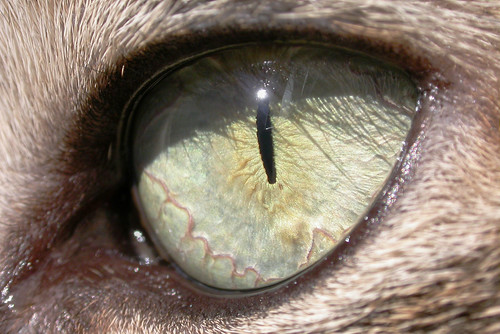The internet is used by many people for a lot of different things. What people do on the internet has changed and evolved over time, but the people who use the internet today, known as contemporary internet users, are being viewed in interesting and specific ways. This essay will outline the views Marc Prensky and David Weinberger have of contemporary internet users. It will highlight their differences and explain how they both give accurate portrayals, in some areas, and flawed observations, in other areas. Prensky’s view of the digital native compared to the digital immigrant discusses the difference between the generation who have grown up with technology and the generation that have had to adapt to it. He outlines how the younger generation do things differently using the technology they have at their fingertips. Weinberger’s view of contemporary internet users is depicted in his portrayal of several different types of persons or personalities using the web today. In connection with Prensky’s description of a digital immigrant, Weinberger approaches the web from this stance of adapting to the technology. These topics will be discussed further and explored through other commentaries and sources. Specific examples will be given to discuss the views of Prensky and Weinberger.
Marc Prensky delves into what young people are using the internet for and how they do this by expanding on topics like communicating; buying and selling; gaming; and learning. He terms this younger generation ‘digital natives’ and describes how they do things differently to ‘digital immigrants’. There is deeper discussion on these two terms in Prensky’s article ‘Digital Natives, Digital Immigrants’. Digital natives are primarily generation Y and younger and they have also been termed ‘Net Genners’ (Leung, 2004). This group incorporates people who have been immersed in technology their whole lives. They haven’t had to change to adapt to technology, but it is like second nature to them. However, digital immigrants have made a shift. They were accustomed to doing things a certain way without the use of technology. In the advent of new technology this group of people have made adjustments. In making these adjustments they still carry their traditional ways of thinking with them, which makes them different from digital natives (Prensky, 2001). Prensky’s discussion in ‘Emerging Online Life of the Digital Native’ (Prensky, 2004), suggests that digital natives are approaching life differently because of the internet.
In David Weinberger’s ‘A New World’, there is discussion about the internet as a place that is emerging and nobody knows where it is heading. Weinberger points out the hopes and fears that arose because of the web and asks why this occurred. He questions the web’s ability to meet all these expectations. He discusses contemporary internet users from the perspective of someone adapting to technology. This is evident when Weinberger talks about rewriting ourselves on the web (Weinberger, 2002). Even in the title ‘A New World’, it is clear that the focus is on the older generations because the internet and technology is not new for younger generations; it is all they have ever known. Weinberger mentions the struggles of building businesses in this new space called the web. He outlines the unfamiliarity of a place with ‘no soil’ and ‘no near and far’ (Weinberger, 2002). This unfamiliarity of the web has caused people to discover themselves saying and doing things they wouldn’t have done before (Poster, 2001). On the internet people can recreate themselves and be someone different to who they are in real life. This ability has caused problems and is displayed in a story in ‘A New World’. Michael Ian Campbell decided to practice his acting, so he says, by trying on a new role in an instant messaging conversation online. This new role involved talk about the shootings that occurred in a school in America. The conversation was taken seriously and police were involved in straightening out the situation (Weinberger, 2002). Serious problems can occur from people playing around with serious issues on the internet and studies have shown people are more likely to say or be involved inappropriate things online than if they were face to face (Langford, 1996).
The accurate portrayals given by Prensky include his description of how young people are engaging in technology for communication, gaming and learning purposes. There are a number of ways this is happening and communication online is the most evident of them all. Teenagers are engaged in online communication through programs like MSN messenger and websites like Facebook and MySpace. This has shaped the way they do life and the popularity of these online communication and social tools is proven. The reason why teenagers love these social networking sites and programs is discussed in an article titled ‘Why Youth Love Social Network Sites: The Role of Networked Publics in Teenage Social Life’. The article addresses the fact that most teens have ventured on the social network sites and in time have gone off them. The importance of these sites in relation to their social life is their involvement and participation with their friends (Boyd, 2008). There is the ability for young people today to create much bigger social spheres because of access to these sites.
Flawed observations by Prensky include a generalization he made about generation Y finding romantic relationships on the internet. He said it was likely that young people today will be finding ‘some or all of their dates online’ (Prensky, 2004). This is far from the case. Although some young people are engaged in online dating, it is still a ‘no-go zone’ for most young people today. Studies have shown involvement in this activity is on the decline from previous years – Youth Marketing Statistics.
Weinberger’s portrayal of contemporary internet users was accurate. In his description of eBay users and shopping online, digital immigrants were said to be engaged in this activity. More and more internet users who are from the digital immigrant group are becoming involved in shopping online through sites like eBay and Amazon (Selvin, 2000 p. 157). Further discussion on inappropriate behavior becoming more prevalent through email and internet use is seen to be happening. People are more confident sitting behind a computer screen. Statistics and studies have shown this. In 1999, 40 people were fired from Xerox for email abuse. In the same year, New York Times fired 23 people for “inappropriate and offensive” emails (Weinberger, 2002).
New technologies have reshaped the way people do life. Contemporary internet users have been opened up to many new possibilities through these technologies. Positive and negative repercussions have both come from the advent of these technologies. Prensky and Weinberger’s views of how these technologies are used by contemporary internet users were interrelated, but different. They both came from different perspectives. Prensky focused on young people and Weinberger on digital immigrants adapting to the technology. The interrelation came through each perspective discussing activities, which occur online. For example, shopping, learning and communicating. From these two perspectives, one can see that contemporary internet users, young or old, are engaged in many online activities and are experiencing the world through technology.
References
Boyd, R. (2008). Why Youth Love Social Network Sites: The Role of Networked Publics in Teenage Social Life. http://www.mitpressjournals.org/doi/pdf/10.1162/dmal.9780262524834.119?cookieSet=1
Louis Leung. CyberPsychology & Behavior. June 2004, 7(3): 333-348. doi:10.1089/1094931041291303.
Journal article by Duncan Langford; Ethics & Behavior, Vol. 6, 1996 - http://www.questia.com/googleScholar.qst;jsessionid=KhyfBGTr3cQ2FnnPqr1LG3hwSdmTXtWyLm1ygw2hxtqHwrftJ6Pr!-1941634607!-2081211395?docId=94802212
Poster, M. (2001). What’s The Matter With The Internet?. University of Minnesota Press.
Prensky, M. (2001). http://www.marcprensky.com/writing/Prensky-The_Emerging_Online_Life_of_the_Digital_Native-03.pdf
Prensky, M. (2004). (http://www.marcprensky.com/writing/Prensky%20-%20Digital%20Natives,%20Digital%20Immigrants%20-%20Part1.pdf - accessed 16/10/09)
Selvin, J. (2000). Internet & Society. Blackwell Publishers.
Weinberger, D. (2002). http://www.smallpieces.com/content/chapter1.html
Internet Resource accessed 16/10/09 - http://www.youth-marketing-statistics.com/2009/01/remember-online-dating.html





